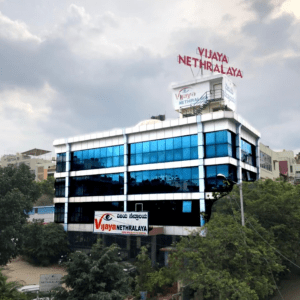Cataract Operation Types: A Comprehensive Guide to Clearer Vision
Cataract surgery has come a long way, offering multiple options tailored to individual needs. and cataract operation types Let’s dive into the different types of cataract surgeries and what you need to know to make an informed decision.
Understanding Cataract Surgery & cataract operation types
What is a Cataract?
A cataract is a condition where the eye’s natural lens becomes cloudy, causing vision to become blurry.
Causes of Cataracts
Cataracts can develop due to aging, prolonged UV exposure, eye injuries, or diseases like diabetes. Certain medications and lifestyle choices, such as smoking, can also increase the risk.
Symptoms of Cataracts
Blurred vision, sensitivity to light, double vision, and difficulty seeing at night are common symptoms. Colors may also appear dull or yellowed.

Why is Cataract Surgery Necessary?
Risks of Not Treating Cataracts
If left untreated, cataracts can result in significant vision loss or even blindness.
Types of Cataract Surgeries:
Phacoemulsification (Phaco Surgery)
Today, the most common cataract surgery uses ultrasound technology to shatter the cloudy lens into small fragments.
How Phacoemulsification Works
A small incision is made, and an ultrasonic probe emulsifies the lens. The fragments are then suctioned out, and a new intraocular lens (IOL) is inserted.
Advantages of Phaco Surgery
- Minimally invasive with a small incision
- Faster recovery
- Less risk of complications
Extracapsular Cataract Extraction (ECCE):
ECCE is an older technique used when the cataract is too dense for Phaco.
Procedure Overview
A larger incision is made to remove the clouded lens in one piece. An IOL is then implanted.
When ECCE is Recommended
It’s typically used in cases where modern methods are not feasible, such as severe cataract density or in regions lacking advanced equipment.
Intracapsular Cataract Extraction (ICCE)
This older technique involves removing the entire lens and surrounding capsule.
How ICCE Differs from ECCE
Unlike ECCE, ICCE removes the lens and capsule in one step, requiring a larger incision.
Why ICCE is Rarely Used Today
Due to its high risk of complications and longer recovery time, ICCE has largely been replaced by modern methods.
Femtosecond Laser-Assisted Cataract Surgery (FLACS)
FLACS utilizes laser technology to create precise incisions and break up the lens.
Benefits of Laser-Assisted Surgery
- Enhanced precision
- Reduced manual errors
- Quicker recovery
Who Should Consider FLACS?
Patients seeking premium, customized cataract surgery often prefer FLACS, though it tends to be more expensive.
Choosing the Right Type of Surgery
Factors to Consider
Severity of Cataracts
Advanced cases may require more traditional methods like ECCE or ICCE.
Cost and Insurance Coverage
While Phaco is generally covered by insurance, FLACS may involve additional out-of-pocket expenses.
Surgeon’s Expertise
Choosing a surgeon experienced in various techniques ensures better outcomes.
Consultation with Your Ophthalmologist
Your eye doctor will assess your condition, discuss options, and recommend the best surgery type based on your needs.
Recovery and Post-Surgery Care
Immediate Post-Surgery Care
- Use prescribed eye drops to prevent infection.
- Use prescribed eye drops to prevent infection.
Long-term Recovery Tips
- Use sunglasses to shield your eyes from harmful UV rays.
- Attend follow-up appointments to monitor healing.
Potential Complications and How to Handle Them
Complications are rare but can include infection, swelling, or retinal detachment. Prompt medical attention can resolve most issues.
Author Details:
Dr. Sushruth Appajigowda holds a prominent position as a Cornea, Cataract, Glaucoma, and LASIK Surgeon in Bangalore. He serves as the chief Cataract and Refractive surgeon at Vijaya Nethralaya Eye Hospital, Nagarbhavi Bangalore. Renowned as one of the finest LASIK surgeons nationwide, he brings with him over 12+ years of experience across multiple LASIK platforms, including ZEISS, ALCON, SCHWIND, AMO, and Bausch and Lomb. Having successfully conducted over 5000 LASIK procedures, Dr. Sushruth holds the title of a Certified Refractive Surgeon and a Fellow of the All India Collegium Of Ophthalmology. Furthermore, he stands as a distinguished speaker at various National and International Forums, using his expertise to guide you in selecting the most suitable procedure based on your health requirements.

Lhttp://vijayanethralaya.com/link-in-bio/
Conclusion:
Cataract surgery is a transformative treatment that enhances vision and significantly improves the quality of life. With various surgical options available, discussing your specific needs with an ophthalmologist ensures the best results.
FAQs:
- What is the safest type of cataract surgery?
Phacoemulsification is considered the safest due to its minimally invasive nature. - How long does it take to recover from cataract surgery?
Most patients recover within a few weeks, with full vision improvement in about a month. - Can cataracts return after surgery?
No, but a secondary cataract (posterior capsule opacification) can develop, treatable with laser surgery. - Is cataract surgery painful?
The procedure is typically painless, with mild discomfort managed by anesthesia. - How do I choose the best surgeon for cataract surgery?
Look for a surgeon with extensive experience, positive patient reviews, and expertise in modern surgical techniques.











